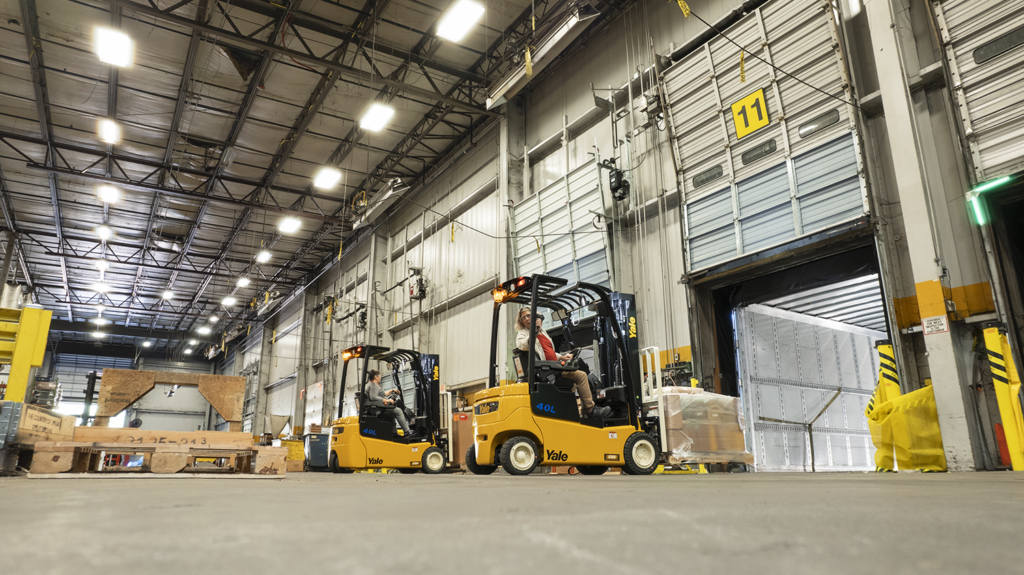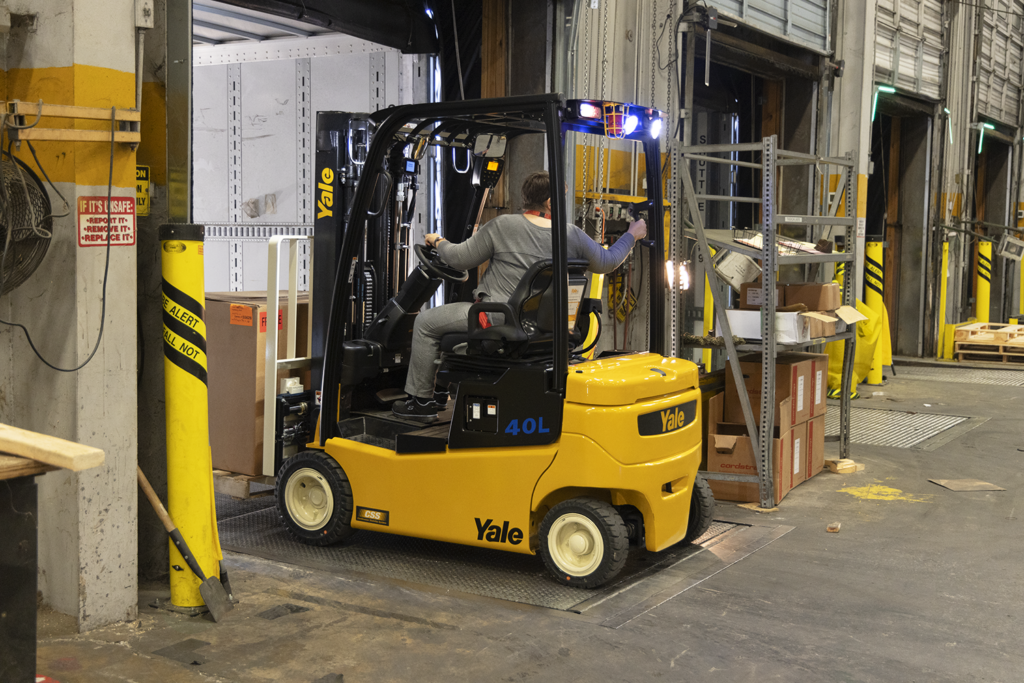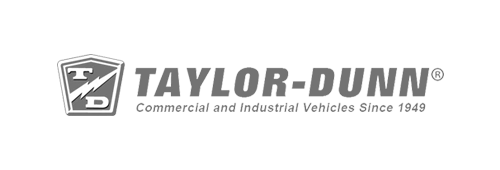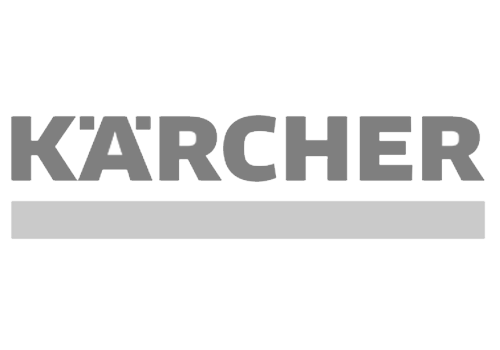
Forklift safety guidelines for loading docks forklifts are essential for efficient loading dock operations, but they also pose serious risks if not handled correctly. At Barclay, we prioritize safety, especially in high-traffic areas like loading docks.
On average, thousands of injuries occur each year and thousands of serious injuries occur because of a lack of proper training and the use of acceptable safeguards and checklists.
Let’s dive into some essential forklift safety tips every business should know to keep both operators and pedestrians safe.
Safety Risks for Forklift Operators
Key safety risks on loading docks operating a forklift on a loading dock can be hazardous without proper training and safeguards.
Common Risks Include:
- Falling from the Loading Dock: An improperly secured trailer or premature truck movement can create a dangerous gap that forklifts might fall into.
- Struck by Falling Objects: Tight spaces and heavy loads increase the chances of objects falling, especially when loads are unbalanced. With thousands of injuries occurring each year, it’s clear that companies must implement stringent safety measures to prevent these accidents.
The Importance of Having Safety Measures in Place
Essential Safety Practices for forklift operators to keep your loading dock safe, here are some steps your business can take:
1. Implement Standard Operating Procedures (SOPs):
SOPs outline each team member’s role and list specific safety checks, such as keeping trucks turned off when positioned at the dock, ensuring drivers remain at a safe distance during loading, and allowing only sit-down units or pallet jacks for trailer entry.
2. Regular Training:
Safety procedures are only effective if your staff knows how to implement them. Training programs ensure all employees understand safe forklift operation, from wearing safety belts to handling unexpected situations.
*Remember: never assume that safety knowledge is “common sense.”

3. Use Wheel Chocks Correctly:
Wheel chocks prevent trailer movement, but only if used properly. Make sure your team is diligent about placing and removing them at the right times, and check them regularly for wear, especially in winter conditions when snow and ice can reduce their effectiveness.
4. Practice Preventive Maintenance:
Avoid unexpected breakdowns or malfunctions by conducting regular maintenance on your forklifts and other equipment. Preventive care helps you tackle minor issues before they lead to costly or dangerous situations.
5. Invest in Engineering Controls:
Consider investing in dock lock mechanisms or monitoring systems to secure trailers and prevent accidental movement, adding an extra layer of safety.
6. Enforce Work Practice Controls:
Require drivers to follow protocols, such as signing in upon arrival, chocking wheels, and handing over keys until loading or unloading is complete.

OSHA Compliance Standards Relating to Forklift Safety
This ensures a controlled environment and minimizes the risk of accidents. OSHA Compliance and Regulations Following OSHA’s forklift safety standards is essential for protecting employees and avoiding regulatory issues.
Key OSHA Regulations include:
- 1910.178(k)(1): Requires setting truck brakes and placing wheel chocks to prevent rolling during loading/unloading.
- 1910.178(m)(7): Calls for additional security measures, ensuring trucks, trailers, and railroad cars remain stationary during forklift operations.
Contact Barclay Brand Ferdon For Proper Safety Training
Need Help with Forklift Safety? Barclay is here for you!
At Barclay, we offer OSHA-compliant training programs, OSHA Mock Audits and OSHA Compliance Classes in addition to reliable forklifts designed to keep your team safe and your business running smoothly. Check out our training safety webpage for more information www.bbfyale.com/training-safety/.
Contact us to learn more about enhancing loading dock safety and training options tailored to your team’s needs. Safety is everyone’s responsibility—let’s make it a priority together!







